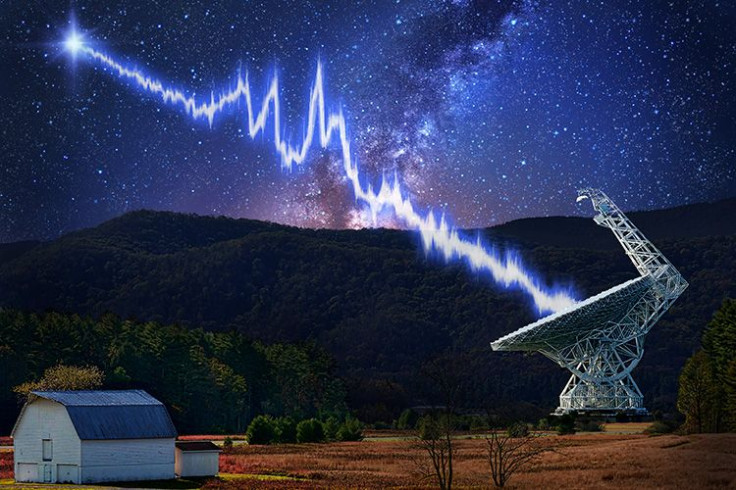Fast Radio Burst: Scientists Spot Brightest Ever Mysterious Space Signal

Fast radio bursts (FRBs) are one of the many mysteries of space that scientists are still attempting to unravel. FRBs are intense pulses of radio waves, which generally last only for short periods of time and are believed to originate from somewhere in outer space.
Although researchers are still uncertain about what causes FRBs, so far, over 30 of these mysterious space signals have reportedly been detected. Now, astronomers have detected three more FRBs, one of which broke records to be the brightest ever observed.
The three signals, titled FRB 180301, FRB 180309 and FRB 18031, came in on March 1, March 9 and March 11. The signals were detected by the Parkes Observatory radio telescope located in Australia.

Each FRB lasts only a few milliseconds but the powerful flashes can generate immense amounts of energy – as much as hundreds of millions of suns. The first-ever known FRB is believed to have occurred in 2001 but it was only in 2007 that scientists observed and verified it. Since then, 32 FRBs have been detected – all but one occurred just once.
Since most FRBs only occur spontaneously and once, they are nearly impossible to predict. This also makes it highly challenging for scientists to trace back the source of the signals.
However, FRB 121102 is the exception to this rule. This particular signal was first detected in 2002 and has since produced repeated bursts. This allowed researchers to uncover its source – a galaxy located around 3 billion light years away from us. A previous study by scientists at Harvard University, which is based on FRB 121102, suggests that FRBs may be firing off every single second across the universe.
“In the time it takes you to drink a cup of coffee, hundreds of FRBs may have gone off somewhere in the Universe," Avi Loeb, a professor at Harvard University’s astronomy department and a co-author of the 2017 study, said in a statement . "If we can study even a fraction of those well enough, we should be able to unravel their origin."
Although there are many aspects about FRBs that we still know nothing about, some clues have helped researchers come up with theories about their origin. For instance, all FRBs have a sweep in their frequency. This suggests that these signals likely came from billions of light years away, Phys.org reported. Some theories suggest that for humans to be able to detect FRBs coming from such far flung reaches of space, the source of these signals must be incredibly powerful – hinting at neutron stars or black holes experiencing cataclysmic events.
However, more research into FRBs is required before scientists can unmask their mysterious nature. Scientists hope to detect many more FRBs in the years to come.
© Copyright IBTimes 2024. All rights reserved.











